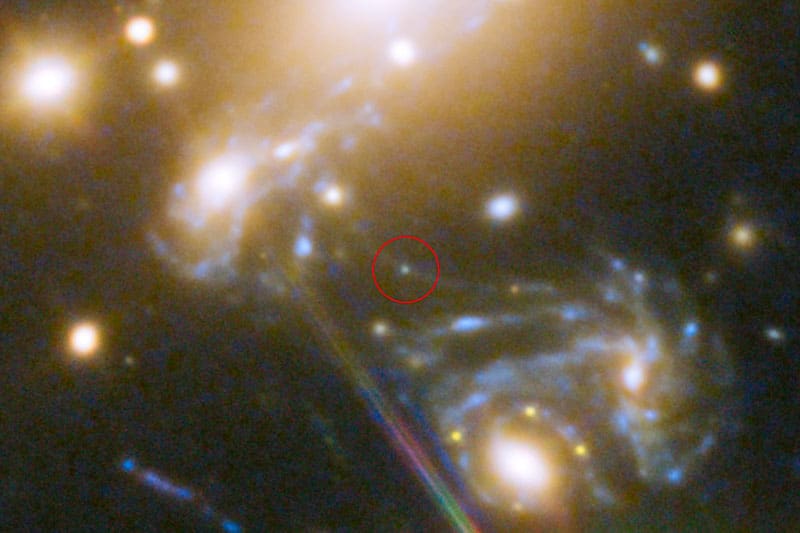
NASA’s Hubble Space Telescope discovers Icarus farthest individual star ever seen.
NASA’s Hubble Space Telescope has set a new record on the most distant ordinary star ever observed. The star was 9 billion light years from Earth.
The age of the universe has been estimated to be about 13.8 billion years.
The star’s observation was made possible by a rare alignment of galaxies that greatly amplified the light coming off it.
Named Icarus, it is a blue star about halfway across the entire universe. The star’s light took about 9 billion years to get here and that light was generated when reality was about 30 percent of its current age, explained NASA.
Light from Icarus reached Hubble through what NASA called “gravitational lensing” and this could be used in future to study stars from distant galaxies. Gravity from a galaxy cluster in between the source of light (in this case, Icarus) and the observer (Hubble) has the tendency to bend light, and magnify it as it passes through space and time. This, at times, can lead to light from the same source scattering, showing two stars in place of one.
Sometimes, if we are lucky, light gets magnified, making it bright enough to be seen from Earth.
“This is the first time we’re seeing a magnified, individual star,” explained study lead Patrick Kelly. “You can see individual galaxies out there, but this star is at least 100 times farther away than the next individual star we can study, except for supernova explosions.”
Gravity from a galaxy cluster called MACS J1149+2223 is what is allowing astronomers to see Icarus. Sighting of the star first happened in 2016, noted NASA, when Hubble was looking at a magnified supernova. They saw a blue light in the same field and, given the position of the light, realized it must have received a lot more magnification from the gravitational lens.
“The source isn’t getting hotter; it’s not exploding. The light is just being magnified,” said Kelly. “And that’s what you expect from gravitational lensing.” That is also how the team knew what they were looking at was not a supernova but an individual star.
Icarus was a supergiant blue star. That means it was a hotter, larger, heavier, more massive, and possibly hundreds of thousands of times intrinsically brighter than the Sun. Even so, the light coming off it needed to be magnified for it to reach Earth, noted NASA.
Sighting of Icarus has also given NASA the unique opportunity to study Dark Matter — the invisible particles that make up a majority of the universe but is somehow not visible to humans.
Icarus might not exist right now, having gone supernova in the time the light from it took to reach Earth.













